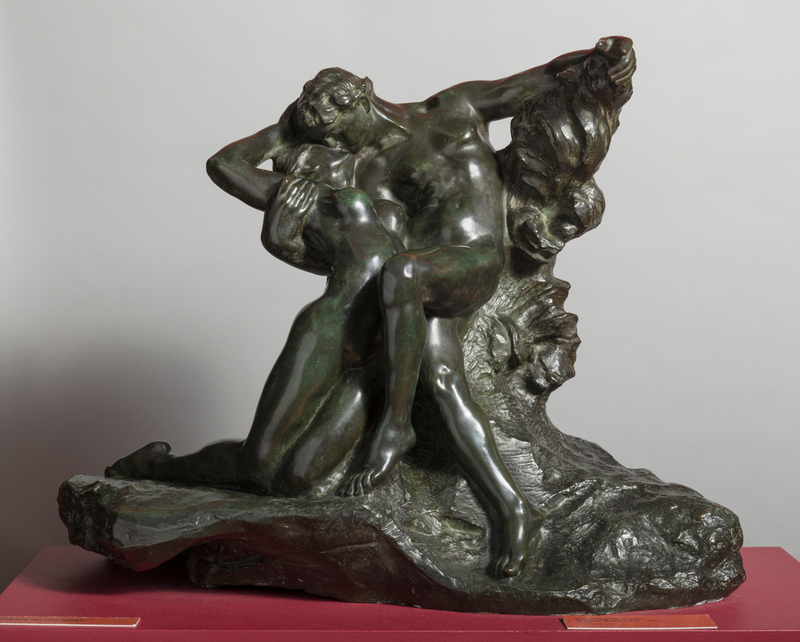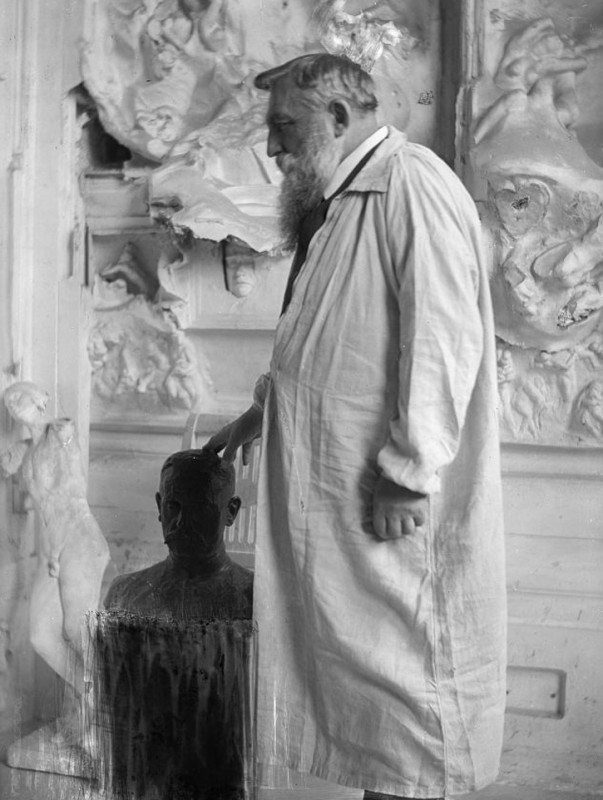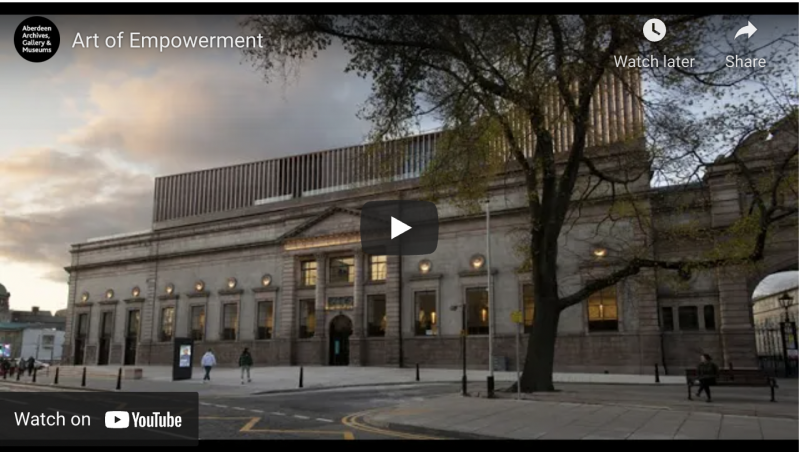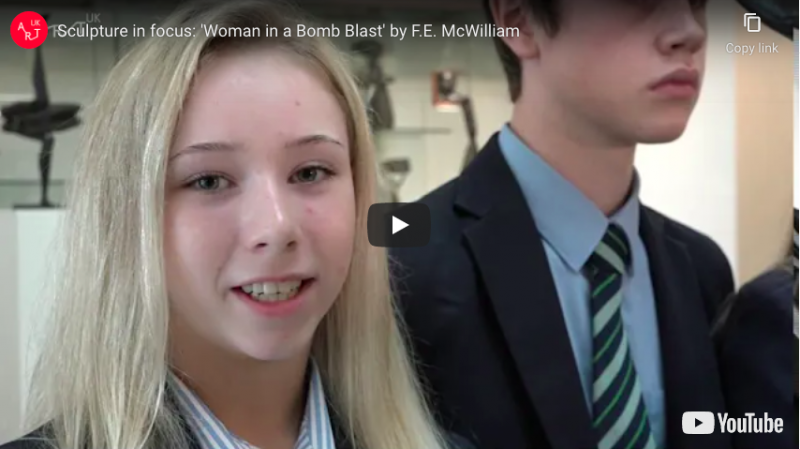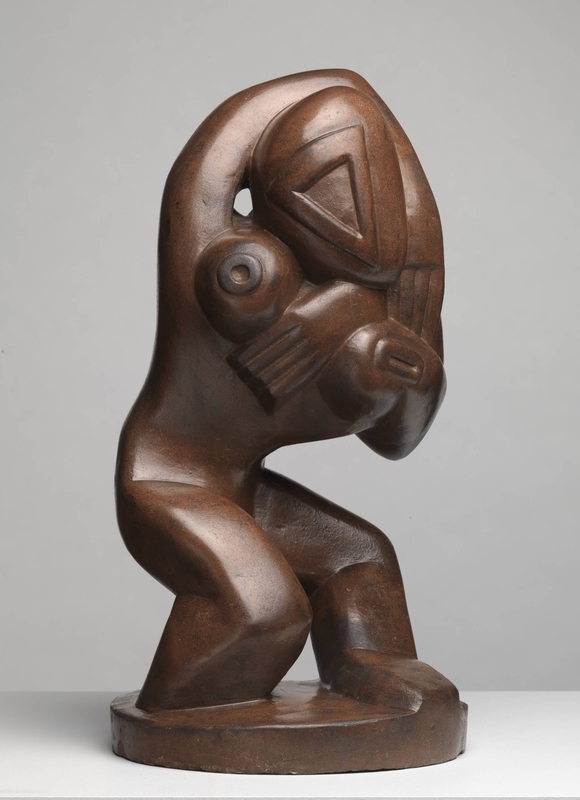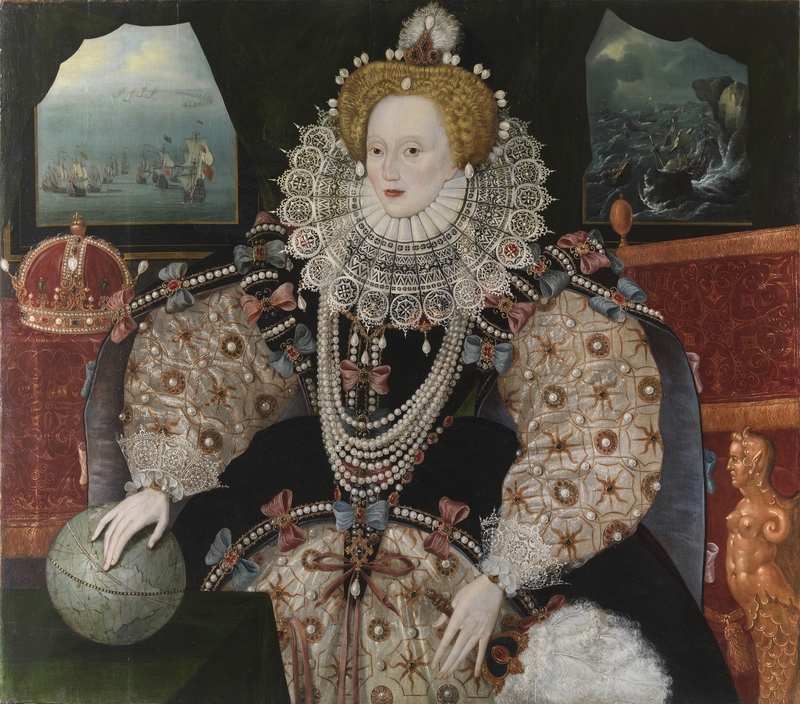'Eternal Spring'
This three-minute audio clip describes the sculpture Eternal Spring by Auguste Rodin (1840–1917).
Full audio description text
Eternal Spring by the French sculptor Auguste Rodin is mounted on a metre-high plinth inside the entrance of The Potteries [Museum &] Art Gallery. The bronze sculpture measures almost a metre in length and stands at just over half a metre high. It depicts the nude figures of a man and a woman locked in a passionate embrace.
The original sculpture was worked in clay, and this model was cast in bronze between 1898 and 1918. The male figure is seated on a rocky outcrop, his left leg crossed over his right, as he leans into the kneeling female figure, whose torso is arched towards him. Her right arm is extended over her head as she seems to pull his head towards her as they kiss. His right arm cradles her underneath her shoulders, whilst his left arm comfortably curls up around a cloud-like form, opening his chest, and creating the highest point of the sculpture. The glossy sheen of the rich, dark brown patina of the bronze accentuates the eroticism of the work, highlighting the contrasting contours and position of the two figures.
Eternal Spring was one of over 200 figurative pieces of groups and individuals Rodin created as part of his 1880 commission to produce a pair of monumental bronze doors for a new decorative arts museum in Paris. Rodin's ambitious project, inspired by Dante's epic poem, The Divine Comedy, was to represent The Gates of Hell populated by the sculptural figures on the doors. Although the museum was never built and the doors were never fully realized, The Gates of Hell became the defining project of the sculptor's career.
Eternal Spring was originally conceived to represent forbidden love based on the tragic love story of Paolo and Francesca, as told in the first part of Dante's poem. However, Rodin eventually chose to focus on enlarging and developing a number of the figures as independent works, Eternal Spring being one of them: he decided that the subject was too uplifting for The Gates of Hell. He transformed the male figure into a mythological god by adding small wings on his back. The sculpture was exhibited at the Annual Paris Salon in 1897 and 1898 under the alternative titles Zephyr and Earth and Cupid and Psyche respectively.
Mythological figures were highly fashionable decorative subjects in which Rodin had specialised earlier in his career. His encounter with the work of Michelangelo, during a visit to Italy in 1875–1876, marked a sea-change in his artistic practice. He pushed the boundaries of the medium to sculpt realistic, fleshy corporeal beings, developing a new modern visual language. In Rodin's lifetime, critics often denounced his work as vulgar, and audiences found his sculptures extraordinary and disturbing. Today, Rodin is widely acknowledged as the father of modern sculpture.
Art UK and VocalEyes
This audio description was created by VocalEyes for Art UK Sculpture, a national project to document and increase access to the UK's publicly owned sculpture. This description is one of 25 representing sculpture collections across the UK.
